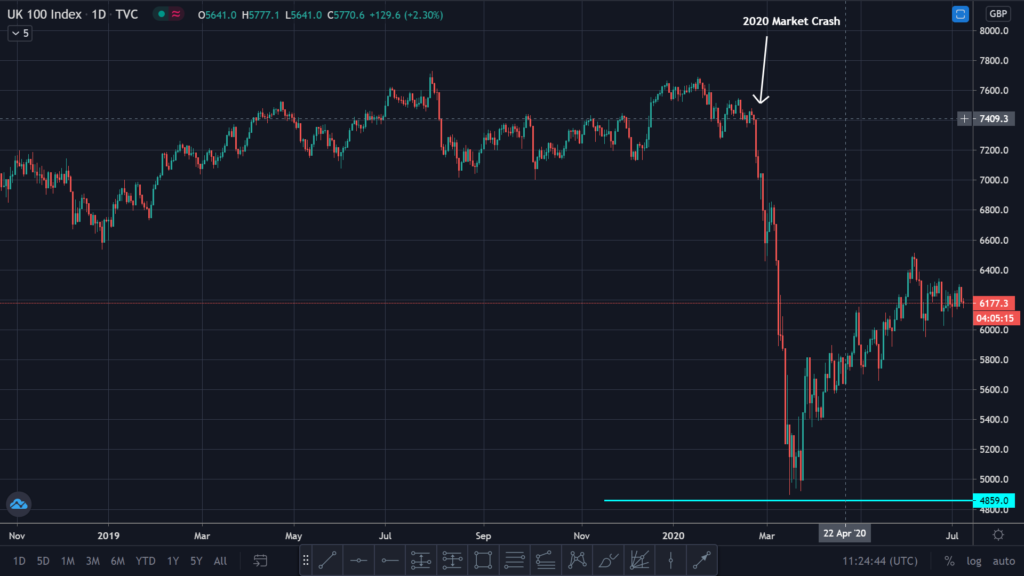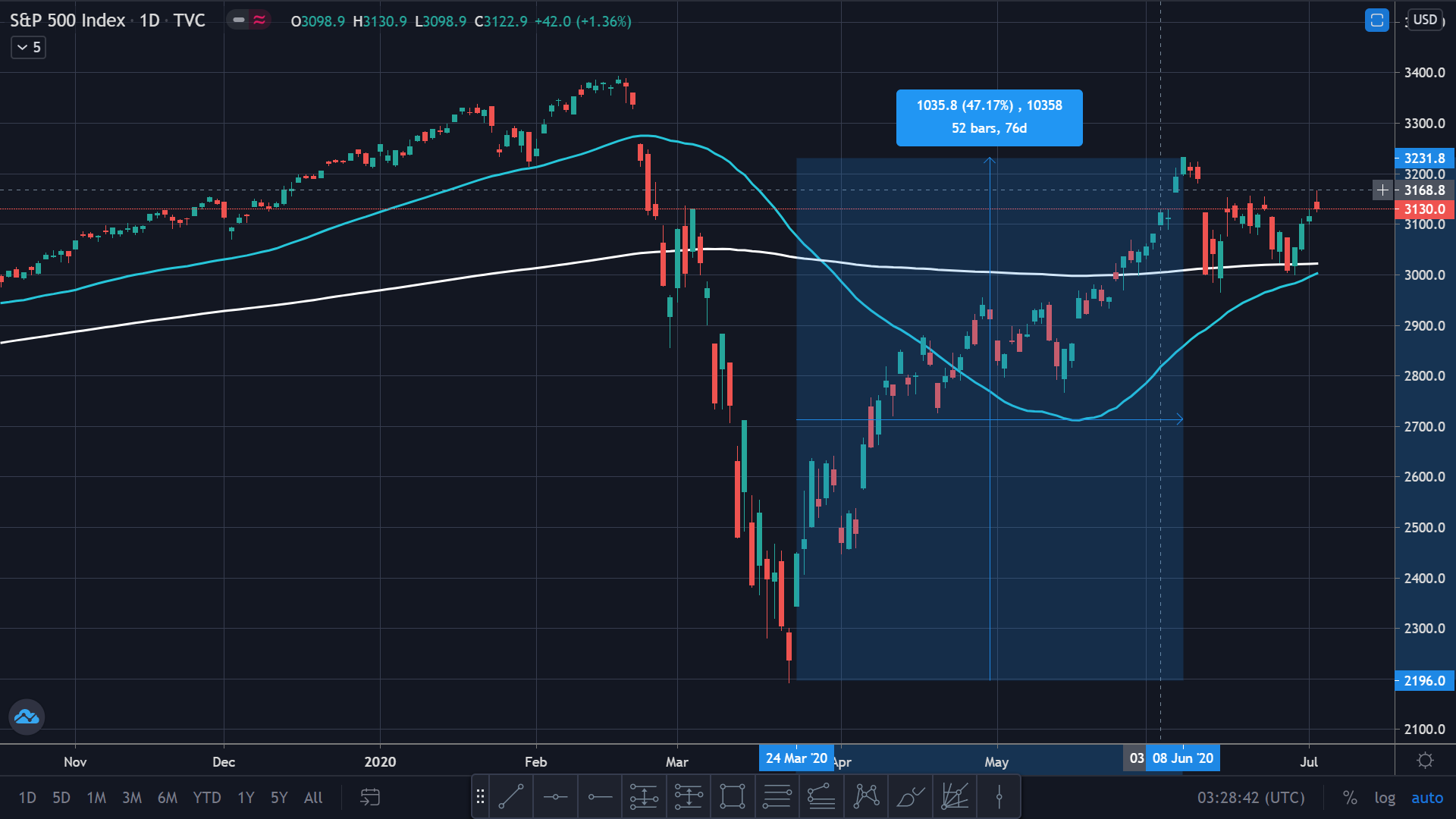The events of the first half of this year, have been like scenes from an apocalyptic movie. Though it may feel like the worst is behind us, I reckon we’re not out of the woods yet!
A second market crash is relatively likely in the coming months and it’s still too early to rule it out.
The First quarter
During the first quarter, world governments responded to the Corona Virus outbreak by closing borders, grounding planes, encouraging non-essential workers to work from home, and banning all non-essential travel.
These actions though well-intentioned caused a tonne of damage to the global economy. We’re likely to continue feeling the effects of this for several months to come.
The economic damage was quickly reflected by the stock market as investors panic-sold their stocks in various companies with the travel-industry taking the hardest hit.
S&P 500 Index
What followed was one of the most severe stock market crashes in recent history. By the 11th of March, the S&P500 had fallen by a record 20% from it’s February 19 intraday record high crossing the threshold into bear market territory.
This panic selling from mid-Feb to late March resulted in a death cross. The 50-day MA crossed below the 200-day MA, and by the time the month ended, the index closed below the 20-month MA.
These 3 factors, all indicate that the bull run has ended and we’re now in a bear market.

But to the untrained eye, looking at the bull run that quickly followed after the first crash it may appear as though the down move is over.
The calm before the storm
Not sure if you’ve noticed but the news cycle seems to have moved past COVID19.
Social distancing measures have been eased, high traffic businesses like restaurants have started to re-open, and people are going out more.
Though it appears as though thnigs are going back to normal, there;s a reason why it’s being termed “the new normal.” I think it’s better perceived as the calm before the storm.
It’s been a long time coming
From a fundamental standpoint there’s so much more wrong with the global economy right now, such that even without COVID19, the market was still bound to crash.
The pandemic simply precipitated the first stage sell-off. And in the coming weeks and months, I believe we shall see the second wave of selling and the second market crash Here’s why:
The Stock Market Bear Blueprint
Historically, when markets turn from a bull market to a bear market they follow a similar pattern. This pattern is governed by the predictable behaviour of the market participants i.e. by human behaviour.
The blueprint is in the form of three waves.
The first wave is the panic-selling stage. This is usually caused by what is termed to as a black swan event. This is an extremely negative event or occurrence that is impossibly difficult to predict and catches the market participants by surprise.
In 2000 it was the Dotcom bubble, in 2001 – 9/11, in 2008, the Financial Crisis, and now for the 2020 market crash, the Corona Pandemic was the black swan.
In the first wave Investors scramble to sell their stock, the supply brought by sellers overwhelms demand as such prices drop rapidly.
From mid-Feb to late March, the S&P 500 dropped from a high near 3380 in late to as low as 2191. During the same period, the FTSE100 dropped 33%. from 7436 to 4898!

The 2nd and 3rd wave
The panic selling of the first wave results in overselling, and when it ends, the market snaps back like a stretched elastic and retraces at least 50%, this is the second wave – the rebound.
We recently experienced this from April to June. The stock market recovered from the sell-off, regaining previously wiped value. The SAP grew by over 46% from the low of 2020.

As I write this article I am watching the markets for the start of the third wave. This wave will see sellers dominating the market with a persistent move downwards.
A simple play to profit from this downward move in the broader stock market is to short the S&P500.
A more long term play involves waiting for the market to show signs of bottoming out and then start buying the stock at discounted prices.
It all boils down to time
If investors maintain their current risk appetite, the market may trade in a range for some weeks or even rise higher. Eventually, the bottom will break, once this happens we would then see prices move lower.
Of course, the future of the market is not set in stone and this may indeed turn out to be a V-shaped recovery as some have suggested. But, if the market follows the pattern of previous bull reversals, we can expect the SNP to drop below 2190, possibly retesting the monthly key region around 1600-1700.
